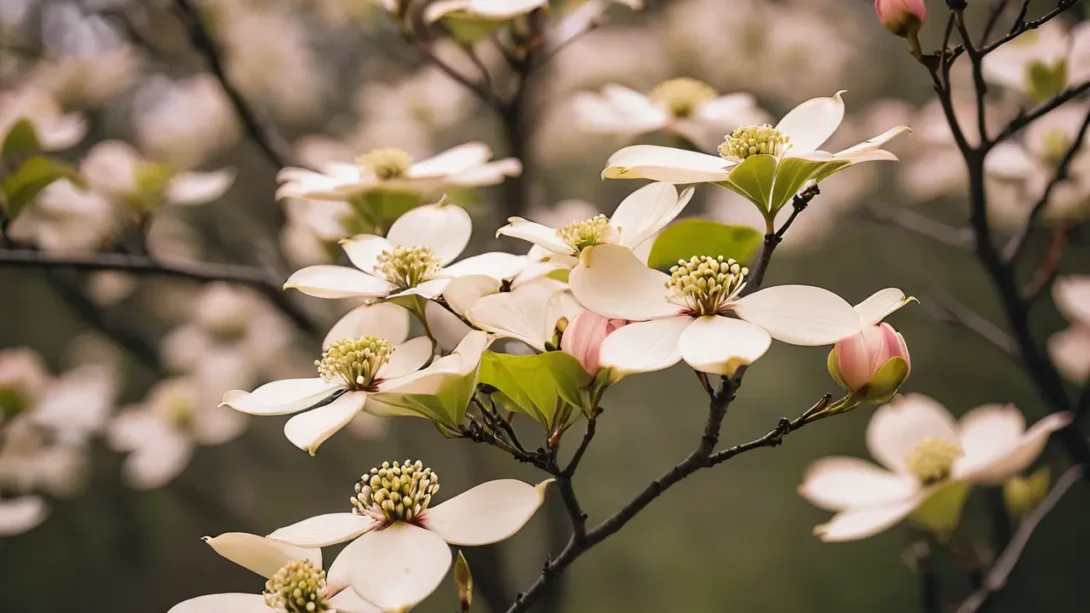Dogwood trees, with their striking spring flowers, attractive foliage, and colorful stems in winter, are a cornerstone of many gardens and landscapes. Pruning plays a pivotal role in the health, aesthetics, and longevity of these beloved trees. This guide will walk you through the essentials of pruning dogwood trees, focusing on when, why, and how to execute this crucial gardening task to maintain the tree’s beauty and vitality.
Dogwood Trees
Dogwoods, belonging to the genus Cornus, are versatile and widely admired for their year-round ornamental value. Among the myriad of species, Cornus florida (flowering dogwood) and Cornus kousa (Kousa dogwood) are particularly popular in residential landscapes. These species, along with others in the genus, exhibit a range of growth habits, from small, understory trees to larger landscape specimens, and understanding these habits is key to effective pruning.
Pruning is not just about removing unwanted branches; it’s a vital maintenance task that, when done correctly, stimulates flower production, enhances plant health, and corrects growth patterns. Indications that your dogwood tree requires pruning include dead, diseased, or damaged branches, crowded growth that reduces air circulation, and any structural weaknesses that could lead to breakage.
Tools and Preparation
Before you begin pruning your dogwood tree, assembling the right tools is essential. You’ll need:
- Pruning shears for small branches
- Loppers for medium-sized branches
- A pruning saw for larger branches
- Gloves to protect your hands
- Disinfectant (such as rubbing alcohol or a 10% bleach solution) to clean your tools
Ensuring your tools are clean and sharp is crucial to prevent the spread of diseases and make clean cuts that heal quickly. Additionally, wearing appropriate safety gear, like gloves and safety glasses, is important to protect yourself during the pruning process.
When to Prune
The best time to prune dogwood trees is in late winter to early spring, just before the new growth starts. This timing allows you to clearly see the tree’s structure and make precise cuts that will heal rapidly with the onset of spring growth. However, there are exceptions to this rule. For instance, if you’re removing diseased or damaged wood, it’s best to do so as soon as the issue is identified, regardless of the season, to prevent further harm to the tree.
Pruning during the dormant season minimizes stress on the tree and reduces the risk of attracting insects or diseases that are more active during warmer months. Additionally, removing dead or unwanted branches before the tree directs energy into spring growth ensures resources are used efficiently for the development of healthy new foliage and flowers.
Pruning Techniques
Effective pruning techniques can significantly enhance the health and appearance of your dogwood tree. Understanding and applying these methods will ensure your tree remains vibrant and structurally sound. Here’s how to approach each technique:
Thinning
Thinning is crucial for improving light penetration and air circulation within the canopy, which helps reduce the risk of disease. This technique involves removing entire branches or stems at their point of origin.
- Identify Crowded Areas: Look for branches that are growing too closely together, causing poor air circulation and reduced light penetration.
- Select Branches for Removal: Choose branches that are weaker, smaller, or those that detract from the overall shape of the tree. Also, remove any branches that cross or rub against each other, as these can cause wounds that are entry points for disease.
- Make Clean Cuts: Use your pruning shears or loppers to make cuts at the branch collar, the swollen area where the branch meets the trunk or another branch. Cutting here helps the tree heal more efficiently.
Shaping
Shaping focuses on maintaining or enhancing the tree’s natural form. This technique is particularly important for young dogwood trees, as early shaping can influence their future growth and appearance.
- Evaluate the Tree’s Natural Shape: Understand the growth habit of your dogwood species to maintain its natural form.
- Identify Misplaced Branches: Look for branches that disrupt the symmetry or natural lines of the tree.
- Prune Gradually: Make selective cuts to remove unwanted branches, avoiding over-pruning. Aim to retain the tree’s natural shape while encouraging a balanced, aesthetically pleasing form.
Rejuvenating
Rejuvenation pruning is sometimes necessary for older or neglected trees that have become overgrown or have lost their vigor. This method involves more significant pruning to stimulate new growth.
- Assess the Tree: Determine if the tree is a good candidate for rejuvenation. This is typically considered when a tree shows signs of reduced flowering, sparse foliage, or significant dead wood.
- Plan Your Cuts: Identify which branches to remove to open up the structure of the tree. In some cases, this may involve cutting back a substantial portion of the tree’s branches.
- Execute with Care: Make cuts judiciously, as over-pruning can stress the tree. It’s often best to spread rejuvenation pruning over two or three seasons to give the tree time to recover.
Special Considerations for Young Trees
Pruning young dogwood trees is essential for their development into well-structured, healthy adults. Focus on shaping the tree during its formative years by removing any competing leaders (the main upward-growing branches) to encourage a single, strong trunk. Also, prune away any branches that grow at narrow angles to prevent future structural issues.
Aftercare Following Pruning
After pruning your dogwood tree, proper care is crucial to support its recovery and continued growth. Ensure the tree is well-watered, especially during dry spells, to help it heal and reduce stress. Applying a layer of mulch around the base of the tree can help retain soil moisture and regulate temperature. However, avoid placing mulch directly against the trunk, as this can lead to rot.
Fertilizing is generally not recommended immediately after pruning, as it can promote rapid growth that the tree is not yet ready to support. Instead, wait until the tree shows signs of new growth and is actively recovering from the pruning process.
Common Pruning Mistakes to Avoid
Pruning is an art that requires understanding and patience. While it’s a beneficial practice for dogwood trees, certain missteps can hinder rather than help your tree’s growth and health. Here are some common pruning mistakes to avoid:
- Over-Pruning: Removing too much foliage at once can stress the tree, leading to poor growth and reduced vigor. As a general rule, avoid removing more than 25% of the tree’s canopy in a single year.
- Improper Cuts: Cuts made too close to the trunk can damage the collar, hindering the healing process. Conversely, leaving too much of a stub can lead to decay and invite disease. Aim to make clean cuts just outside the branch collar.
- Neglecting Diseased or Damaged Wood: Always prioritize the removal of diseased, damaged, or dead branches, regardless of the time of year. Delaying this can allow diseases to spread or weaken the tree further.
- Ignoring the Tree’s Natural Shape: Each dogwood species has its inherent form. Pruning without considering this natural shape can result in a visually unappealing tree and potentially harm its growth.
Aftercare Following Pruning
After pruning, your dogwood tree will need some care to recover and thrive:
- Watering: Keep the soil consistently moist, especially in the weeks following pruning. Adequate water is crucial for helping the tree heal and encouraging new growth.
- Mulching: Apply a 2-3 inch layer of organic mulch around the base of the tree to help maintain soil moisture, regulate soil temperature, and reduce weed competition. Keep the mulch a few inches away from the trunk to prevent moisture buildup and potential rot.
- Fertilizing: Wait to fertilize until you see new growth indicating the tree is recovering. Use a balanced, slow-release fertilizer to provide necessary nutrients without overwhelming the tree with excessive growth.
Conclusion
Pruning your dogwood tree is a vital part of its care, promoting health, vigor, and the stunning floral display that makes these trees so cherished. By following the correct timing, employing proper techniques, and avoiding common mistakes, you can ensure your dogwood remains a resilient and beautiful feature in your garden for years to come.
Remember, the goal of pruning is not just to shape the tree but to ensure its overall health and longevity. With the guidance provided in this article, you’re now equipped to approach dogwood pruning with confidence. Whether you’re maintaining an established tree or nurturing a young sapling, your efforts will pay off in the form of a stronger, more vibrant dogwood tree.



